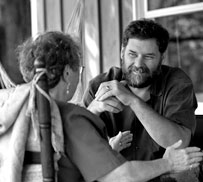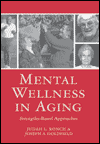![]()
Search
Recent Posts
- ChangingAging.org Redesign -- Please Bookmark!
- Disaster in Buffalo
- Power Up Friday
- Blanchard WinsDays
- Kevin Frick writes...
- Monkhouse Monday
- Getting Closer!
- Blanchard WinsDays
- Power Up Friday
- My Pick for Health and Human Services
- Understanding Health Care Reform
- Facts Are Stubborn Things: Social Security Edition
- Monkhouse Monday
- Localism is Coming
- Krugman Can't Wait...
Recent Comments
Category Archives
- AGING 100
- Aging
- Culture
- Dementia
- Eden Alternative
- Erickson School
- Green House
- Health Policy
- Longevity
- Media
- Rockets
Monthly Archives
- February 2009
- January 2009
- December 2008
- November 2008
- October 2008
- September 2008
- August 2008
- July 2008
- June 2008
- May 2008
- April 2008
- March 2008
- February 2008
- January 2008
- December 2007
- November 2007
- October 2007
- September 2007
- August 2007
 Subscribe to this blog's feed
Subscribe to this blog's feed
Announcements

Blog Data
« Pumping Iron the Old Fashioned Way | Main | Change We Can Live In »
April 4, 2008 |Permalink |Comments (0)
Power Up Friday: Attitude Matters, Dude
There is no doubt that the Eden Alternative has been a major force in the movement to transform long-term care in our society. (That's a fact - I'm not just "kissing up" to the Blogmeister here.)
But even Bill Thomas will tell you that the Eden movement has caused a lot of people to pay too much attention to the superficial aspects of the new habitat - the dogs, cats, birds - what we call the "fur and feathers" of Eden. These are tools to help create a human habitat; but simply bringing a cat or a bird into a nursing home without embarking on deeper aspects of interpersonal and organizational transformation will yield poor results, (as many people have found when they have tried to "short-cut' the process).
Now the Green House Project (TM) has spawned a new movement to complete the physical transformation of long-term care through the construction of small homes that house only 8-10 elders. The media and society at large are paying attention. In addition to Green Houses, many other small house models are in development, and a new movement is born.
But every new trend has potential pitfalls for those who rush to adopt the concept without a deep understanding of its origins. So what do we need to watch out for next? What are the "fur and feathers" of these small house models?
Quite simply, it's the house itself. These homes are such a radical departure from any nursing home we've seen, that they cannot help but astound people who view them for the first time. What a great idea! Why haven't we thought of building these before?
There's an excellent reason why. If the building was all there was to it, we'd have built them a long time ago. However, our ATTITUDES about aged care have created the physical features of traditional nursing homes. Our society's view of aging as decline and our paternalistic approach to elder care have informed the institutions we have built over the past half century. You don't erase those biases simply by putting people in a small house.
I believe that small homes like the Green House are the future of aged care. The best ones, however, realize that the physical structure will not solve the plagues of institutionalization unless it embodies more than walls and windows. It must also reflect a new attitude toward aging and the aged, toward well-being and illness, toward risk and reward, toward autonomy, and toward collaborative approaches to care.
In short, we must build Green Houses in our minds, in our interpersonal relationships and in our operational design, before we lay that first cornerstone. Otherwise, it'll just be a 10-bed institution.
-- Al Power














